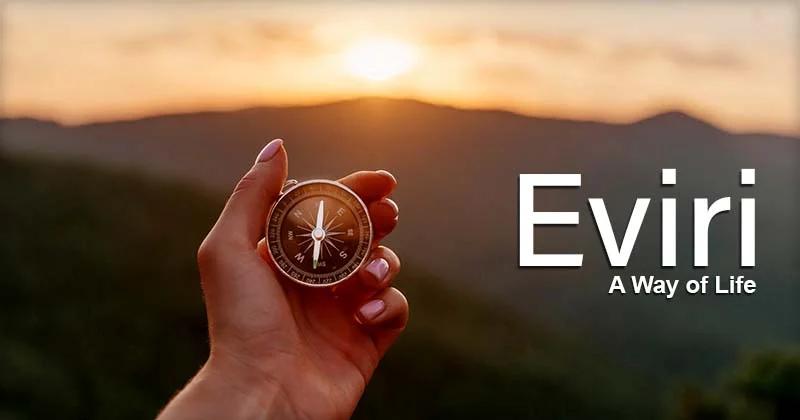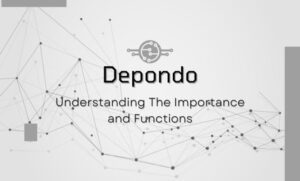In this era of technological advancement and creative exploration, a concept of evırı has emerged that bridges tradition, technology, and innovation: Synthesis. Far beyond a mere trend, Synthesis embodies a profound shift in how we approach design and problem-solving, blending the wisdom of the past with the possibilities of the future. This comprehensive guide delves into the essence of Synthesis, its philosophical foundations, practical methodologies, diverse applications, and actionable steps for integration. Embark on a journey through the intricate tapestry of Synthesis, where tradition converges with innovation, and creativity thrives.
In an era defined by converging technology and creativity, a new term has emerged with transformative power across multiple sectors: Evırı (pronounced “e-veer-uh”). Far more than a mere buzzword, it symbolizes a paradigm shift in design and problem-solving that transcends its linguistic roots. This comprehensive guide explores the essence of Evırı, its philosophical underpinnings, practical techniques, diverse applications, and steps for implementation. Join us on a journey through the intricate tapestry of Evırı, where tradition meets innovation, and creativity flourishes.
Unveiling Synthesis
A Holistic Approach Philosophical Roots of Synthesis Practical Methods of Synthesis Deconstruction and Reconstruction Integration of Analog and Digital Elements Holistic Design Thinking Applications Across Industries Architecture: Bridging the Past and Future Product Innovation: From Concept to Creation Digital Solutions: Enhancing User Experience Benefits of Embracing Synthesis Efficiency and Optimization User-Centric Solutions Sustainable Practices Implementing Synthesis: A Strategic Approach Define Clear Objectives Analyze and Integrate Iterate and Enhance Deploy and Evolve Conclusion Unveiling Synthesis: A Holistic Approach
Synthesis encapsulates a holistic approach to design and problem-solving, weaving together elements from diverse sources to create harmonious solutions. Originating from the desire to blend tradition with modernity, Synthesis embodies a mindset that values both heritage and progress.
Philosophical Roots of Synthesis
The philosophy of Synthesis draws inspiration from various cultural and intellectual traditions, emphasizing unity, balance, and interconnectedness. By synthesizing seemingly disparate elements, Synthesis encourages a reevaluation of our approach to creativity and innovation.

Practical Methods of Synthesis
Practical methodologies form the backbone of Synthesis
Deconstruction and Reconstruction: Breaking down existing constructs to their fundamental components allows for the creation of novel solutions that blend tradition with innovation. Integration of Analog and Digital Elements: Synthesis leverages the strengths of both analog and digital technologies, seamlessly merging the tangible with the virtual. Holistic Design Thinking: Adopting a holistic approach to design fosters the creation of solutions that address the needs of users, stakeholders, and the environment in tandem. Applications Across Industries
Synthesis permeates various industries
Architecture: Synthesis in architecture involves harmonizing historical aesthetics with contemporary functionality, creating spaces that resonate with inhabitants on multiple levels. Product Innovation: In the realm of product design, Synthesis facilitates the development of innovative solutions that seamlessly integrate cutting-edge technology with timeless design principles. Digital Solutions: Synthesis informs the creation of digital experiences that are intuitive, immersive, and meaningful, enriching the lives of users in an increasingly digital world. Benefits of Embracing Synthesis
Embracing the principles of Synthesis offers numerous benefits
Efficiency and Optimization: Synthesizing diverse elements leads to streamlined processes and optimized outcomes, enhancing efficiency at every stage of development. User-Centric Solutions: By considering the needs and preferences of end-users, Synthesis ensures that solutions are not only functional but also deeply resonant and user-friendly. Sustainable Practices: Synthesis promotes sustainability by encouraging the reuse of existing resources, minimizing waste, and fostering a holistic approach to environmental stewardship. Implementing Synthesis: A Strategic Approach
Implementing Synthesis in projects involves a strategic approach
Define Clear Objectives: Begin by clearly defining the objectives of the project, ensuring alignment with both short-term goals and long-term vision. Analyze and Integrate: Analyze existing frameworks and integrate elements from diverse sources to create a cohesive synthesis of ideas and concepts. Iterate and Enhance: Continuously iterate on solutions, refining them based on feedback and insights gleaned from stakeholders and end-users. Deploy and Evolve: Deploy synthesized solutions into the real world and monitor their performance over time, iterating and evolving as necessary to adapt to changing needs and circumstances.
The Philosophical Basis for Evırı
It encompasses a diverse array of philosophical ideologies, ranging from Oriental minimalism to the western principle of ‘form follows function.’ By prioritizing substance over superficiality, it prompts a reevaluation of design and problem-solving constructs.
Evırı Techniques
Practical techniques underpin Evırı, facilitating its application in various projects
Reverse Engineering: By examining the root cause of a problem, simpler solutions with fewer steps can often be uncovered. Functional Minimization: Distilling objects or processes to their basic functions streamlines optimization efforts. Iterative Design: Continuously refining solutions reveals essential elements while eliminating unnecessary layers. Applications of Evırı
Evırı finds application across diverse industries
Architecture and Interior Design: it encourages simple yet profound spaces that prioritize human interaction, comfort, and environmental sustainability. Product Design and Development: Iconic products, such as the iPhone, embody its fusion of aesthetics and utility. Software and User Experience (UX): it principles guide the development of intuitive interfaces that prioritize user needs and minimize cognitive load. Advantages of Using Evırı
The adoption of Evırı principles offers numerous benefits
Improved Efficiency: Optimizing designs based on functionality enhances efficiency in production and usage. Greater User Satisfaction: Simplicity inherent in its-designed products leads to higher levels of user satisfaction. Environmental Considerations: its focus on minimalism and resource efficiency contributes to sustainability efforts by reducing waste and energy consumption. Implementing it in Your Projects
Implementing Evırı in projects involves a step-by-step approach
Step 1: Identify Your Core Objectives: Clarify the fundamental goals of the project, focusing on the main problem to be solved. Step 2: Assess and Simplify: Evaluate existing designs or solutions to identify unnecessary features or processes that can be streamlined. Step 3: Iterate: Experiment with different iterations, continuously refining solutions to achieve optimal outcomes. Step 4: Test and Refine: Gather feedback from users or stakeholders to refine designs further, ensuring they meet intended objectives. Step 5: Implement and Monitor: Implement the refined design into production or workflow, monitoring its performance over time for continuous improvement.

FAQs
What is the origin of the term Evırı?
It originates from the Turkish word “evirme,” meaning “to turn,” symbolizing the concept of flipping something inside out or backwards in design and problem-solving.
How does Evırı differ from conventional design approaches?
It prioritizes simplicity, functionality, and elegance, focusing on distilling objects, spaces, or processes to their most vital functions, unlike conventional approaches that may prioritize complexity or aesthetics.
Can Evırı principles be applied in any industry?
Yes, Evırı principles can be applied across diverse industries, including architecture, product design, software development, and beyond, to optimize efficiency, enhance user satisfaction, and promote sustainability.
What role does creativity play in Evırı?
Creativity is integral to Evırı, as it involves innovative thinking to distill complex problems into elegant and efficient solutions. Evırı encourages creative exploration within the constraints of simplicity and functionality.
How can individuals and organizations start implementing Evırı principles?
Implementing Evırı begins with a mindset shift towards prioritizing simplicity and functionality. Individuals and organizations can start by identifying core objectives, assessing and simplifying existing designs or processes, and iterating on solutions to achieve optimal outcomes.
Conclusion
Synthesis represents a harmonious blending of tradition, technology, and innovative thinking, offering a pathway to solutions that are both timeless and forward-thinking. By embracing the principles of Synthesis, individuals and organizations can navigate the complexities of design and problem-solving with grace, wisdom, and creativity.
Evırı represents a fusion of tradition, technology, and creative innovation, empowering individuals and organizations to unlock hidden potentials within their projects. By embracing Evırı’s principles, one can navigate the complexities of design and problem-solving with depth, elegance, and lasting impact.























+ There are no comments
Add yours